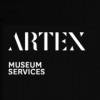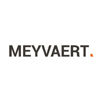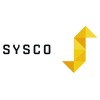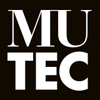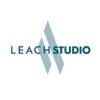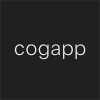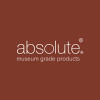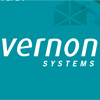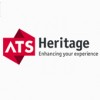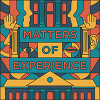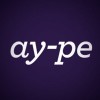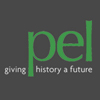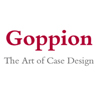Katherine Biggs on why the phenomenon of MOOCs and online courses, and the ways in which the heritage sector can tap into their potential, is not going away any time soon. At a time when museums are looking closely at how they can make the most of their often diminishing budgets, MOOCs – Massive Open Online Courses – provide a tempting option for mass engagement

Proud course completer on Twitter © Historic Royal Palaces
About the author: Katherine Biggs is the Multichannel Producer for Historic Royal Palaces, working across all six palaces to engage audiences with culture and heritage through digital technology. Alongside developing MOOCs this has included large-scale, interactive 360 degree experiences at family festivals and app-based digital missions for children. Prior to this, Katherine co-managed the British Museum’s Samsung Digital Discovery Centre.
American museums have long been advocates of the online learning model, for example MoMA’s large presence on Coursera, but the UK is fast catching-up, with the British Library running courses on FutureLearn, Tate’s collaboration with Khan Academy, and the University of Leicester’s introduction to Museum Studies online course, to name just a few examples.
At Historic Royal Palaces we wanted to better understand whether this free online course model could provide a platform to engage a new audience with our stories. We worked with FutureLearn, an Open University owned platform which has been running courses since 2013, and our first course, ‘A History of Royal Food and Feasting’ launched in June 2016. Produced by our Learning & Engagement team in collaboration with the University of Reading and colleagues from across the palaces, the course charted the history of royal food from the Tudors to the Victorians.
Our key objective was to use the course to reach out to a large, global audience who hadn’t visited the palaces before. And at a topline we achieved this: we had nearly 13,000 sign-ups for the course, of whom 57% were converted into learners (a learner is someone who has completed at least one step of the course – the average conversion for a FutureLearn course is 50%). These learners came from 153 different countries (only 31% of participants were from the UK), spanned a diverse range of ages and they really did represent a new audience for Historic Royal Palaces: 35% said that they had never visited any of the palaces, and 25% had never heard of the organisation before.
However the real surprise for us was the added bonus of running a course on this scale for such a range of learners. One of the most exciting benefits of MOOCs for the heritage sector is the accessibility they offer. By its very nature a MOOC is open to anyone (and traditionally free), and its massive scale means that there are no limits to joiner numbers. Anyone who wants to join can, from any corner of the world. FutureLearn’s guiding principles fit within this ethos; they want to embrace this massive reach as a beneficial, exciting, social way of learning. Their learners are at the core of their mantra, as we quickly learnt during the first run of the course, with 35,366 learner comments posted across the five week course.
Rather than just replicating the experience onsite, the online course model provides a completely different, personal way for learners to engage. Participants from across the world shared their personal stories, anecdotes and thoughts on the course, all of which provided a layer to the interpretation that we don’t see at the palaces.
Feedback from a course participant: “I’ve really enjoyed this course, especially the contributions from the non-UK learners regarding their own cuisine and history. All of the personal recollections have been lovely too, I think it’s really important to hear stories of grandparents and relatives that lived through previous ages whilst we still can! Thank you to all who contributed!”
However, the difficulty with this model is that the course really needs to be tailored to this social learning style. We pitched our course on the intersection of social history and ‘lifestyle programming’ to have broad appeal, and to provide a hook to those who might think that history is not for them. Courses are made up of a range of activity steps, including videos, animations, quizzes, articles and discussions: lots of variety and opportunities for active participation.
We were guided by the University of Reading’s expertise in creating these courses, and at every step we were encouraged to think about what opportunities there were for learners to participate, and ways of keeping interest by varying the content. So we created discussion steps, historical recipes for learners to try at home, videos of experts from Historic Royal Palaces and the University of Reading, costumed characters filmed within the palaces, animations showing where foods came from, and for the second run of the course we’ll be including even more hands-on activities. We also ran Q&A sessions with our course experts, to actively respond to learners. In the next run of the course, we have responded to learner feedback, and included ‘shared by learners’ links to external sites. Peer to peer knowledge sharing has been a key part of the course, and so we want to recognise this, as well as providing additional resources for new learners.
The digital nature of the course allowed us to show a cross-section of our work, much of which can’t be easily shown onsite. For example, we included exciting new research on chocolate from Collections Curator Polly Putnam, alongside conservation films revealing the Great Kitchens at Kew Palace, and a range of Georgian satirical prints from the collection. We also focused on four of our palaces, to draw attention to our smaller sites such as Kew and Kensington Palaces. A secondary achievement from running the course was driving learners to our existing online content. The post-course survey showed that 59% of learners would like to learn more about Historic Royal Palaces through its website and YouTube channel, and the web links featured within the course showed an uplift during its run.
Feedback from a course participant: “The Historic Royal Palaces site is amazing! There’s such a lot of stuff there. Of course I got diverted from the course and have been watching videos about the king’s fools, about Henry VIII’s diseases, his beliefs and his policies, and listening to great podcasts of all sorts. So, many thanks for the link.”
One unknown for us was whether online learners could be converted to onsite visitors, or whether the course might actually remove the incentive to visit. When designing the course we were mindful of this, and also of participants who may be existing visitors to the palaces, so the course provides content that complements what is onsite, rather than duplicating it. Feedback from learners has been positive: of those surveyed at the end of the course, 46% of people said they planned to visit one of our palaces, 85% of people said they felt inspired to visit one of the palaces, and comments reflect these statistics.
It is hard to measure whether the course has deterred visitors who might otherwise have visited the palaces, but both qualitative and quantitative feedback from the course supports the theory that this course is more likely to drive people to the palaces, rather than removing the incentive to visit. The Arts Council report ‘Understanding the Impact of Event Cinema’ supports this theory, concluding that large-scale digital initiatives like this can convert digital joiners to onsite visitors.
Feedback from a course participant: “We have decided to extend a planned visit to London in September in order to incorporate a visit to Hampton Court Palace.”
Any course participants now visiting the sites may have an increased sense of ownership, and more of a personal relationship to the palaces. They have cooked food which was traditionally cooked in our kitchens, they know the story behind the folded napkins at Hampton Court Palace, and their questions have been answered by our experts.
We have learnt a huge amount from running this course, and will continue to learn more during the next runs. There are huge opportunities for the heritage sector to use these courses, not just for reach, but to tell different stories which cannot be told onsite. We look forward to seeing what future courses appear on the horizon, and how other heritage sites balance their online and onsite visitors’ expectations.
Katherine Biggs
Multichannel Producer,
Historic Royal Palaces




